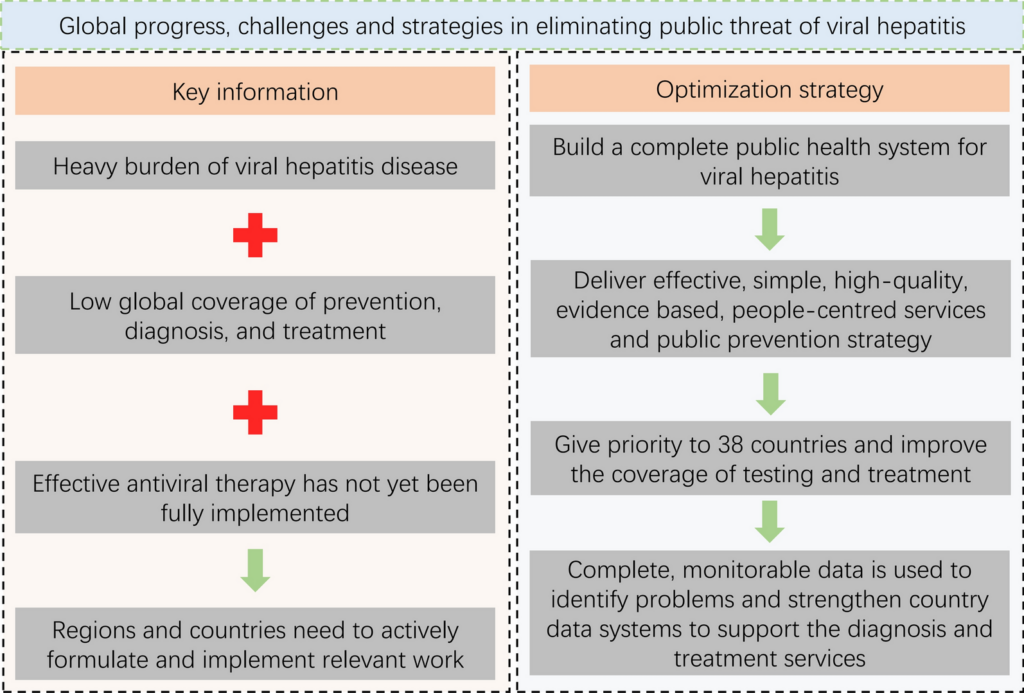Background The problem caused by viral hepatitis is a major public health challenge faced in the past decade, and the global goal of eliminating viral hepatitis by 2030 is still far away. With the use of hepatitis B vaccine and the launch of new drugs, there are more means to control viral hepatitis and more technologies to prevent, diagnose and treat it. While improving the coverage of vaccine use, drugs for treating hepatitis B are not only becoming more effective, but also decreasing in price. The objective of this article was to explore the urgent issues that need to be addressed in global viral hepatitis with the increasing availability of vaccines and antiviral drugs. Main text The updated World Health Organization guidelines for the prevention, diagnosis, care and treatment for people with chronic hepatitis B infection (2024 edition) and Chinese guidelines for the prevention and treatment of chronic hepatitis B (version 2022) simplify clinical algorithms for the diagnosis, treatment, and monitoring of hepatitis B, expand treatment eligibility criteria, and provide alternative treatment options, which will cover a higher proportion of all hepatitis B surface antigen positive populations. These actions promote the global goal of eliminating the public health hazards of viral hepatitis by 2030. Among the countries that have made remarkable progress in eliminating viral hepatitis policies, the key strategy is to simplify the diagnosis and treatment plan. Furthermore, the World Health Organization has identified 38 priority countries for viral hepatitis. Expand access to viral hepatitis services in these countries. Conclusions Regions and countries with the high burden of viral hepatitis still need to take urgent action regarding the new measures proposed by the WHO to achieve the 2030 targets. First, countries must establish a complete public health system aligned with the World Health Organization’s strategy. Second, provide effective, people-oriented services and public prevention strategies. Third, prioritize the implementation of health strategies in the 38 identified priority countries. Finally, use complete and measurable data to monitor progress. Graphical AbstractRead More


